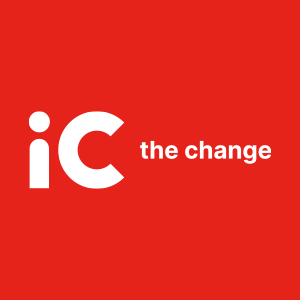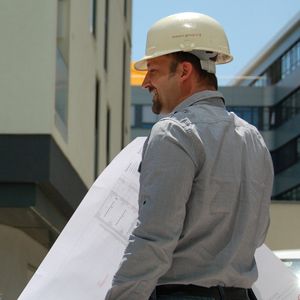“Living in a time where change becomes the new constant requires foresight and forethought to make sure that tomorrow, too, we will be successful.” Following our ambition and goals to have successful projects, green building design and construction is one crucial and unavoidable part in this paradigm traditionally, the construction industry has been resilient to change and has very slowly adopted the changes in that other industries embraced more easily.
With digitalization and utilization of new technologies and approaches, projects and project information is finally becoming more transparent for the investors. This transparency leads to easier decision making, which is finally releasing the full potential for green building design and construction to add value to projects.
These developments are strongly contributing in creating new opportunities for implementation of green design and construction practices, where the user is finally taking the central role. Although the investors and owners are showing an increasing awareness on the importance and benefits of green building, there is still a relatively high level of skepticism present. This is mostly due to the fact that green building design and construction require certain specific measures and activities that were not typical for conventional projects.
For investors, benefits and impact of green building was for a long time a big unknown. This often led to unjustified fear from cost escalations in the design and construction phase, where the overall impact in the operational phase and over a longer period of time, has very often been neglected. Integrated design and Building Information Modeling, both based on cross discipline design and decision making process form the early stages of the project as well as is helping us address those challenges with better effect than ever before. Managing information through the entire lifecycle of a design process from early conceptual design, through construction administration even into facility management is imposing new requirements for the design teams.
The industry is showing a clear tendency to connect/enhance the information flow between project phases and project participants in a better and more structured way, with the ultimate goal to integrate this data flow and information management also in the operation phase.
This new transformational project approach will also allow us to more closely verify the real impact of green buildings, channeling the discussion from “if it is needed” to “why it is needed”.
The real estate market (users, developers, private and public sectors) is facing ever clearer requirement regarding energy and climatic conditions, operating capability and sustainability on new developments and renovation projects in the buildings sector. The noticeable market impact of sustainability certificates for real estate (both domestically and internationally) supports this development. A high degree of specialized expert´s knowledge, measurement and simulation technology is required during the entire real estate development cycle in order to satisfy these requirements.
What is LEED
Exactly those principles and approaches are reflected in green building certification schemes, e.g. LEED (Leadership in Energy and Environmental Design) as one of the internationally most spread and recognized, all the metrics that matter most: energy savings, water efficiency, CO2 emissions reduction, improved indoor environmental quality, and stewardship of resources and sensitivity to their impact (USGBC, 2017).
In this respect, the newest version V4 of LEED is clearly showing that also the green building certification schemes have recognized the importance of integrated approach and are acknowledge the transformation in the design and project delivery that is currently ongoing in the AEC industry. This opens a huge potential in optimizing projects in terms of energy, thermal comfort etc.
Benefits of green building
When talking about green buildings, it is important to recognize that green buildings go far beyond the basic aspects of energy efficiency only. Energy efficiency although a focal point in the certification systems, is just one of the impact categories. Investors, owners and users can also benefit on the following way:
- Enhance resource efficiency
- Increase in retail and lease values
- Reduce the environmental impact of buildings
- Increase the well-being of occupants in a healthy and resource optimized environment
- Improved indoor comfort
- Thermal comfort
- Air quality
- Visual comfort
- Acoustic comfort
- Transparent comparison of buildings based on their environmental performance
- Goes beyond the national codes and building practices
Added value of green building
Research shows that the added value of green buildings can be identified regardels of the project type (USGBC, 2017);
- Retail: increase in sales per area
- Factory: increased production offices: 2-16% productivity increase
- Schools: 20% better test performance
- Hospitals: earlier discharge
- Offices: 2-16% productivity increase
Project examples
One of the successful stories connected to green building design, construction and certification is development of Sheikh Zayed Desert Learning Center – Al Ain, UAE (2008-2010). The building was developed as an integral part of the Al Ain Wildlife Park & Resort. Committed to the most demanding sustainability requirements set forward by Abu Dhabi Urban Planning Council (UPC), the innovative building design was completed by integrating the alternative energy supply concept as well as building system automation and IT infrastructure design.
The aim of the project was to achieve the highest building certification levels available for LEED New Construction (Platinum) and the local reference System Estidama (5 Pearls), and so emphasis was also put on the building physics design of the building.
Key features:
- ca. 40 % reduction in energy use
- ca. 80 % water usage reduction
- LEED Platinum Design
- Estidama 5 Pearls rating achieved
Another example is a refurbished existing office building located in the center of Vienna, Austria. With its ca. 13.000 m² , by implementing the sustainable processes and practices in operation and maintenance the building has been awarded with LEED Platinum certificate following the Existing Buildings: Operation and maintenance system. The project was also a great example on how the end user can benefit from green building certification schemes as occupant comfort survey has been designed and carried out, which was then used to create the most appropriate strategies to achieve certification. By utilizing the efficient water saving strategies, upon retrofit the building potable water consumption has been reduced by almost 40% compared to the baseline.
Sectors for future growth
As the whole AEC industry is ongoing a transformation, this is also positively reflecting development of green buildings. Predictions show that globally the top sectors for future growth of green buildings are: New commercial construction, hospitality sector and retrofit of existing buildings.
Investors and markets are discovering added values of green buildings, which among other bring lower energy bills, higher productivity and enhanced design in general. Benefits of building green often bring greater value in rental rates, higher sale prices, lower operating costs.
The Ukrainian real estate market is not exempt from those positive developments, with a clear intention of the investors and owners to offer better project to the final users.
Reference information about CES and iC Ukraine
iC consulenten Ukraine and CES clean energy solutions are members of iC group of companies. Today, iC group employs about 350 experts in three main offices in Vienna, Salzburg and Ljubljana. In addition, there are a number of branches, project and site offices around the world.
iC group is operative in nine technical fields, including Building & structures, Transport & Mobility, Environment, Technical building equipment, Construction & Project management, Water management, Geology & Geotechnical engineering, Tunnelling and Energy.
Clean energy solutions GesmbH is a Vienna/Austria based consulting and engineering company with the objective to implement energy projects and rehabilitations (heat generation, co-generation, renewable energy projects) and energy efficiency projects. CES was established in 2008 and operatively CES is organised in four business units: Hydropower, Plant Engineering, Innovative Building, and Energy efficiency.
Supported by former activities within iC group of companies CES holds a strong market position in Austria and abroad with focus on CEE/SEE and CIS countries.
iC has a permanent office presence in Ukraine since 2006 and officially registered as iC consulenten LLC in 2013. As group member, iC Ukraine supports projects of the internationally working departments, as well as develops and implements own project on the local market. iC Ukraine business activities are focused on program management, engineering design and technical assistance for projects financed by international finance institutions through programs of the European Commission, EIB, EBRD, NEFCO, the World Bank, GIZ, UNIDO and other Development Funds and projects in the private and public sector.




